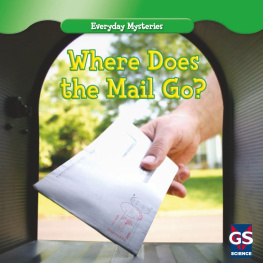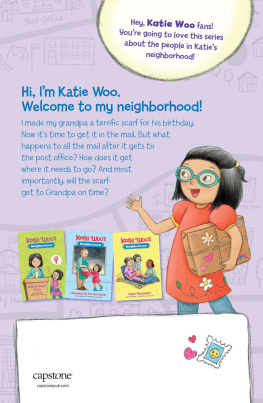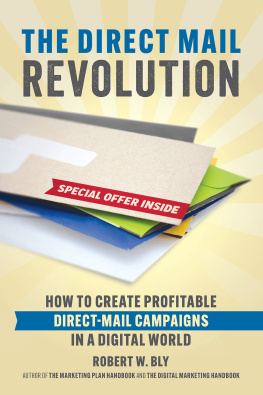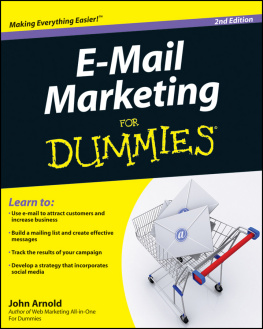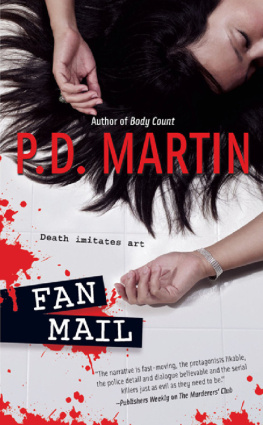
Good Mail Day
A Primer for Making Eye-Popping Postal Art
Jennie Hinchcliff | Carolee Gilligan Wheeler
Photographs by Von Span

This book is dedicated to
Dr. X and J.v.S.,
The Eternal Network,
and every pen pal who
ever wrote back.

Contents


Introduction:
Make Every Day a Good Mail Day
No one sends mail anymore.
The idea of putting pen to paper to write a letter has come to be seen as an antiquated concept, a ridiculously slow and old-fashioned conceit in the era of lightning-fast messaging and email. Yet, despite the fact that the demise of handwritten correspondence is nearly taken for granted, there is still a subset of people who, when confronted with a beautiful letter, sigh wistfully and say, Oh, I love mail. You know who you are.
At events and in the workshops we teach, we hear about how people had pen pals once, when I was younger, or when I had time. People always mention that they used to get the coolest stuff in the mail but that the Internet has changed everything, and now all I get in my mailbox is junk and bills. For the majority of people, the Art of Mail is all but forgotten. Writing anything beyond a stock thinking of you phrase inside a birthday card can be difficult enough.
And so, a diagnostic question must be asked. Do you know why no one gets mail anymore? The answer is simple but infuriating. Because no one sends mail anymore.
Want to get mail?Good mail? The answer is right here: Send mail. Imagine that you were the last person on Earth who sent real mail, and that every time you sent off a heartfelt letter or beautifully conceived collage postcard, you received in return nothing at all. Possibly a thank-you, but no more. No reciprocity. No postal love in return. Unfair? Absolutely. Therefore, rule number one is right here: To get a letter, send a letter. It starts with you. Its that easy, and the change begins right here, with this book.

CATHERINE HELFER AND JENNIE HINCHCLIFF
We tell everyone that we met because of bookbindingat a book arts event in the Bay Areabut the way we really got to be friends was through the mail, even though we lived only forty-five minutes apart. Wed send one another hand-stitched postcards, or little booklet-letters housed in envelopes decorated with parking stubs and photos of ladies wearing chicken head masks. We have kept all of the correspondence weve exchanged, and looking at it provides a fascinating look at how our friendship emerged.

ARTWORK BY SUGENE YANG-KELLY, CAROLEE GILLIGAN WHEELER, JENNIE HINCHCLIFF, AND CATHERINE HELFER

In the past, when sending mail was more commonwhen people actually sent thank-you notes rather than just thought about it, or when dinner invitations came by postit may not have been quite so extraordinary to find something beautiful in ones mailbox. But now? To take the effort to write a letter (much less spend time on a piece of mail art) is to send a signal to someone that you want to go the extra mile for that person. Its wooing your friends, charming strangers, and bringing joy to your acquaintances. Good mail is an affirmation: yes, you are worth it.
We love mail. Because youre holding this book, lets assume that you love mail, too. And within these pages youll find even more reasons to create, send, and appreciate mail and mail art.
Well introduce some historical greats of mail art and discuss why mail art is such an enduring and intoxicating artistic medium. Youll learn how to give good mail, how to make allies of your letter carriers and postal clerks, and how to push the envelopeliterally! Well take you through a number of ways to liven up time spent waiting in line, on a dull conference call at work, or cooling your heels in the dentists waiting room. No more excuses! Well show you that you do have time to make great mail artwell prove that it only takes ten minutes and a postage stamp.
Well show you howif youre feeling braveyou can dig through recycling bins, scan the sidewalks, or raid your kitchen drawers or office desk for new mail art elements. Once youve cut your teeth on supply-closet postcards and trash transformation, well up the ante. Ready to test your 3-D mail art skills? Well show you how to move beyond the business envelope and still please the USPS. After that, its all about refinementartistamps, improving your handwriting, finding pen friends, andonce youre readystarting the cycle all over again with your own call-for-entries.
Theres a reason why the international discipline of mail art is referred to as a Networkeach element in the equation is important, each link has its indispensable role. To decide to participate is as simple as sitting down, waking up the imagination, and affixing a stamp. There is only one hard and fast rule: send mail.
Make every day a Good Mail Day.


From Dadaists to Dilettantes:
Mail Art Is for Everyone
The artist must be aware that he is part of a larger social network, part of the Eternal Network which surrounds him everywhere and elsewhere in the world.
Robert Filliou
The postal system is an incredible entity. You write a letter and slip it into an addressed envelope. Once it leaves your hand, whether dropped into a mailbox or taken to the post office, your letter will be stamped by a postal clerk and sorted; then your missive leaves the back room of the post office and passes through other hands (and machines) in order to find its way to the recipient. Two days or two weeks later (depending on where your intended destination is), your mail arrives in the receivers mailbox. The post office and its system of automated organization is something that we have come to rely upon and take for granted.
People have long communicated via the written word, whether through chiseling pictograms on cave walls or sending email via a PDA. Works of fine art and literature are filled with references to letter writing and correspondence, reminding us that there is a longstanding tradition of using the written word as a means to inspire, communicate, and exchange ideas. For mail artists, the exhilaration is increased exponentially: imagine a world in which your mailbox always holds the promise of artwork, as opposed to the hassle of junk mail. Throughout the mail art Network, the mailbox is a museum leading to unknown worlds, inspiring ideas, and constant surprise.
Next page

